Sports
Are you ready for Opening Day? Here’s your guide to the offseason chaos that rocked MLB
Published
6 مہینے agoon
By
l955w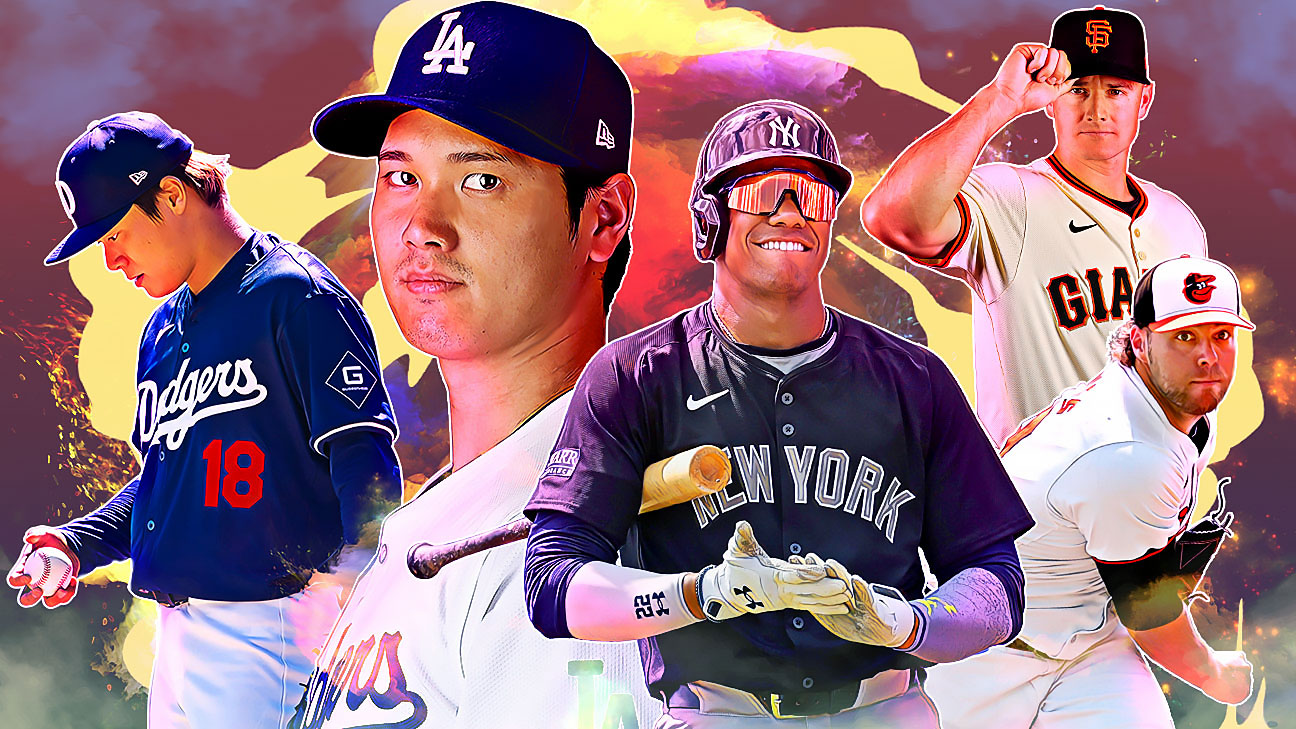
Before the shock factor of a World Series featuring a pair of wild-card teams in the Texas Rangers and Arizona Diamondbacks had completely worn off, the hot stove heated up and provided everything — from a manager changing sides in one of MLB’s best rivalries to a $1.2 billion free agency spending spree by one team. And, of course, the prolonged drama surrounding the free agents who didn’t sign until well into spring training — or, in some cases, remain unsigned heading into Opening Day.
No matter how you spent the winter, you probably know that Shohei Ohtani joined the Los Angeles Dodgers — and is $700 million richer than when we saw him last fall. But whether you are just realizing that Juan Soto is now wearing pinstripes and that several aces are in new uniforms or you know all the moves but still aren’t sure what to make of them, we’ve got you covered for when all 30 teams take the field for Opening Day on March 30 (after the Dodgers and Padres get the season started March 20-21 in Seoul, Korea).
ESPN baseball experts Jorge Castillo, Bradford Doolittle, Alden Gonzalez and David Schoenfield break down the moves that rocked the offseason. What did they mean for the teams that made them — and the rest of MLB?
Date of the deal: Nov. 6 — Cubs fire Ross, hire Brewers’ Counsell as manager
What it means for the Cubs: Beginning with the Leo Durocher tenure in the late 1960s and early ’70s, the Cubs have careened between star managers and unproven managers, going back and forth in an ongoing game of skipper pingpong. They’ve never gone all-in like this: Counsell’s five-year, $40 million contract makes him the highest-paid manager in baseball history. That’s what being on the short list of the game’s top managers gets you these days. Now Counsell just has to prove he’s worth it. How? By doing what he did in Milwaukee, where his clubs annually outperformed expectations, showed an uncanny ability to win close games, fielded stout bullpens and generally enjoyed an atmosphere of self-improvement. If that happens and Counsell remains entrenched at Wrigley beyond his historic pact, he’d be the first Cubs skipper to last more than five years at a stretch since Durocher.
How it will shape the 2024 season: If Counsell succeeds, the Cubs will have taken one of the best parts of one of their chief competitors and turned it into their own advantage. The Cubs finished nine games behind the Brewers a season ago. The rosters throughout the NL Central have evolved, but if the Cubs win the division and outperform the Brewers in measures like record in one- and two-run games, execs around the game might reconsider how much value an elite manager adds.
Dominoes: Counsell’s stunning decision to move 90 miles to the south not only rewrote the outlooks of the NL Central’s top two teams, but it kept him away from other powers looking for a next-level skipper, like the Mets, Giants, Astros and Padres. Whether Counsell would have gone to any of those teams is an open question but, then again, pretty much no one thought he’d end up with the Cubs. The landscape of managers in baseball was rearranged by his decision. — Doolittle
Date of the deal: Nov. 19 — Phillies, Nola agree to $172 million contract
What it means for the Phillies: This offseason further proved two things about the Phillies: They value top-tier starting pitching and they’re not afraid to spend lavishly. The Phillies advanced deep into October each of the past two seasons thanks in part to having Nola and Zack Wheeler atop their rotation. Keeping the co-aces around for the long haul was their top offseason priority. They quickly locked up Nola, their longtime rotation stalwart, signing him to a seven-year, $172 million contract on Nov. 19. Then in March, they gave Wheeler a three-year contract extension worth a whopping $126 million. The $42 million in annual average value is the richest for an extension in MLB history. That’s a $298 million investment in two pitchers in their 30s. The Phillies know championship windows don’t last forever — and they’re going for it.
How it will shape the 2024 season: The Phillies are playing for a wild-card spot. That’s life in the NL East with the loaded Braves around. And that’s fine with them. They reached the World Series in 2022 and Game 7 of the NLCS last year as a wild-card entrant. With Bryce Harper headlining a veteran lineup plus the strong rotation, the Phillies are back in contention.
Dominoes: Nola flirted with joining the Braves, but the Phillies were always the favorites. The Braves, as a result, would later pivot in a surprising direction. Wheeler’s decision will have more of an impact next winter, which was when he was scheduled to hit free agency. The free-agent class is still slated to be strong for starting pitching with Corbin Burnes, Max Fried, and Max Scherzer among the options. — Castillo
Date of the deal: Nov. 27 — Cardinals add Gray on three-year contract
What it means for the Cardinals: The Cardinals had the second-worst rotation ERA in franchise history at 5.04, leading to their first losing season since 2007 and worst win-loss percentage since 1995. They were desperate for arms and in less than a week’s span in late November signed Lance Lynn, Kyle Gibson and Sonny Gray — three veterans who each ranked in the top 25 in the majors in innings pitched last season. The Cardinals are historically conservative in free agency, and they remained disciplined here as Lynn and Gibson signed one-year deals with club options while Gray, coming off a second-place finish in the AL Cy Young race, signed for three years and $75 million (with a club option), although his salary will increase from $10 million in 2024 to $35 million in 2026.
How it will shape the 2024 season: While there is some age-related risk here as Gray is the youngest of the trio at 34, the signings should help stabilize the rotation and push the Cardinals back into contention in the NL Central. Let’s put it this way: If Gray can reproduce his 2023 numbers — which is unlikely, but go with us here — that’s a seven-win improvement over what Adam Wainwright provided. That alone won’t be enough, however: The Cardinals will still need better offense and better defense.
Dominoes: Nola and Gray had both been linked to the Braves, who were looking to add more starting pitching depth after entering the postseason with an injury-riddled rotation. With those two off the board, the Braves would eventually turn in a more creative direction for rotation help. — Schoenfield
Date of the deal: Dec. 6 — D-backs, Rodriguez reach four-year deal
What it means for the D-backs: When the Diamondbacks’ magical run to the World Series finally ended, general manager Mike Hazen lamented not adding another starting pitcher before the trade deadline. It wasn’t much of a surprise that he ultimately got one this offseason. But signing Eduardo Rodriguez to a four-year, $80 million deal offered a deliberate statement: The small-market D-backs were doubling down on their inspired playoff push (and not following the path of so many other teams that used RSN uncertainty as an excuse to limit spending). They added to the Rodriguez signing by bringing back left fielder Lourdes Gurriel Jr., trading for third baseman Eugenio Suarez, and adding a new DH platoon in Joc Pederson and Randal Grichuk.
How it will shape the 2024 season: The D-backs are no longer the young, plucky team that became a feel-good story in October — they are a legitimate force. They have a good, young core in Corbin Carroll, Alek Thomas, Gabriel Moreno, Geraldo Perdomo, Brandon Pfaadt and, eventually, Jordan Lawlar, but they also have solid veteran pieces around them. And they play an inspired brand of baseball that gives their opponents fits. In other words, they need to be accounted for. Their offseason proved that.
Dominoes: Rodriguez’s contract followed those of Nola and Gray, and it helped set up deals for Shota Imanaga, Marcus Stroman and Lucas Giolito. More importantly: The D-backs’ overall aggression might have played a role in what their division rivals ultimately did. — Gonzalez
Date of the deal: Dec. 6 — Yankees acquire Soto in seven-player deal
What it means for the Yankees: Adding potent left-handed-hitting outfielders to balance their lineup and signing Yoshinobu Yamamoto to place alongside Gerrit Cole were the Yankees’ two principal goals entering the offseason. They checked the first box with the best possible option, trading for superstar Juan Soto in a seven-player deal with the Padres on Dec. 6. Trent Grisham, another left-handed-hitting outfielder, was also sent to the Bronx. Michael King, Jhony Brito, Randy Vasquez, Kyle Higashioka, and prospect Drew Thorpe went the other way. They had acquired Alex Verdugo, a third left-handed-hitting outfielder, from the Red Sox the night before. It was a wonderful start to their offseason. The momentum wouldn’t last.
How it will shape the 2024 season: The decision to trade for Soto in his final year of team control before hitting free agency solidified the Yankees’ level of urgency. It’s always championship-or-bust in the Bronx, but failure this season could have significant repercussions for the people in charge. With Soto and Aaron Judge, the Yankees boast perhaps the best one-two punch in the majors. It lengthens a lineup that was beset by injuries in 2023. Soto and Judge should both compete for AL MVP. The Yankees will score plenty of runs if they stay healthy. That’s a big if.
Dominoes: Soto was, by far, the best position player on the trade market. And the Yankees were, by far, the likeliest destination for him. The next-best left-handed-hitting option for teams that missed out on both Soto and top free agent Shohei Ohtani? Cody Bellinger. Landing Soto affords the Yankees the opportunity to convince him that playing in pinstripes for the rest of his career is the right move before reaching free agency next winter. It’ll ultimately come down to money. But it doesn’t hurt if Soto loves his time in the Bronx. — Castillo
Date of the deal(s): Dec. 9 — Ohtani signs 10-year, $700 million contract
Dec. 14 — Dodgers and Rays agree to Glasnow trade
Dec. 21 — Yamamoto goes to Dodgers for 12 years, $325 million
What it means for the Dodgers: The Dodgers’ front office has acted aggressively at times in prior years, but they’ve never been exorbitant. Not like this, at least. They signed Shohei Ohtani to an unprecedented 10-year, $700 million contract (with an astonishing $680 million of it deferred), and that triggered a wild string of follow-up additions.
They acquired Tyler Glasnow, arguably the best starting pitcher on the trade market, then signed him to a five-year, $136.56 million extension. They signed Yoshinobu Yamamoto, Japan’s most accomplished pitcher, for $325 million. They added Teoscar Hernandez, free agency’s best corner-outfield bat, for $23.5 million. And they brought back the likes of Jason Heyward, Ryan Brasier, and of course, Clayton Kershaw. What does it all mean for the Dodgers? It means they had better win the World Series.
How it will shape the 2024 season: Los Angeles, as Dodgers manager Dave Roberts put it, is now “the epicenter of sports and baseball.” Their spring training, packed to the gills with fans and media on a daily basis, merely offered a taste. The Dodgers will have the proverbial target on their backs this season, even more so than ever before, and Dodgers officials have accepted that they’ll have to take on the villain role whenever they go into opposing ballparks. Perhaps Mookie Betts said it best: Every game against the 2024 Dodgers will qualify as their opponents’ “World Series.” It’s hyperbolic, certainly, but not by much.
Dominoes: The Dodgers added the two best free agents — by a pretty significant margin — in a span of 12 days. And teams like the Giants, Mets, Yankees, Cubs and Blue Jays — in on Ohtani or Yamamoto or both — were left scrambling. At a time when some key big-market clubs were cutting costs and some of the best free agents were notably flawed, the Dodgers’ dominance might have also helped trigger a lull in the offseason.
Date of deal: Dec. 15 — Wacha, Renfroe join Royals
What it means for the Royals: They are trying. The Royals lost 106 games last season and own a bottom-10 minor league system. That’s not a great combination. And yet they spent more in free agency than any other American League team, adding a number of midlevel veterans during the offseason. That list includes pitchers Seth Lugo, Michael Wacha, Chris Stratton, Will Smith and hitters Hunter Renfroe, Adam Frazier, Garrett Hampson and Austin Nola, all via free agency. They also traded for relievers Nick Anderson and John Schreiber, as well as the injured Kyle Wright for a future rotation spot.
That’s a bold offseason for a bottom-feeding club. A cynic might say the team’s effort to lock down a new ballpark development might have played a part in the aggression. An optimist might note that in raising the floor of the roster with the new veterans, Kansas City at least has a shot at reaching .500 which, in the AL Central, is contention. The Royals are the one team in its division that took such an aggressive short-term stance.
How it will shape the 2024 season: All of the newcomers are capable of being contributors on a good team. Even as a group, it isn’t the kind of collection that’s going to carry a team to 90 wins. The Royals must make real improvement at the minor league level but they also need to polish off the development of its key young players in the majors — Vinnie Pasquantino, MJ Melendez, Nick Pratto and Drew Waters. That is where any true upside to this roster is found. If that happens, and Bobby Witt Jr. turns his last two months of 2023 into a full season of stardom, the Royals could be a lot more interesting this season.
Dominoes: For all the praise the Royals have earned for their offseason splurge — and they deserve it — Kansas City remains a postseason long shot. They did, after all, lose 106 games last season. But if the Royals were to manage a surprise run to the AL Central title, the lead execs who tore down (like the White Sox) or took measured approaches to the offseason (Twins, Guardians, Tigers) will have a lot to answer for in their cities. — Doolittle
Date of the deal: Dec. 30 — Braves acquire Sale in trade with Red Sox
What it means for the Braves and Red Sox: Since closing out Boston’s 2018 World Series title with a three-strikeout ninth inning and then signing a huge extension with the Red Sox the following spring, Chris Sale had made just 56 starts — missing time to a litany of injuries including Tommy John surgery and shoulder inflammation that cost him two months in 2023. When healthy, however, he was solidly effective in his 20 starts last season: 4.30 ERA, 3.80 FIP, 125 strikeouts in 102⅔ innings. His stuff still plays as more than a back-end starter.
Entering the final guaranteed year of his contract, the Red Sox had perhaps tired of Sale’s injuries and decided to cash in on his remaining trade value. They needed a second baseman and flipped Sale in late December for Vaughn Grissom, a promising young infielder blocked in Atlanta by Ozzie Albies.
How it will shape the 2024 season: With the additions of Sale and Reynaldo Lopez, the Braves now have more depth to line up behind Spencer Strider, Max Fried, Charlie Morton and Bryce Elder. Assuming they once again run away with the division title, they can carefully monitor Sale’s innings and have him ready for October — which, after all, is what this trade was all about for them. For the Red Sox, Grissom will get a chance to play regularly for the first time. (Although he’s likely to miss Opening Day with a groin injury.) He hit .330 in Triple-A with nearly as many walks as strikeouts and while there probably isn’t much more than 15-homer upside, the Red Sox can hope for much better production up the middle with him and a full season of Trevor Story at shortstop.
Dominoes: A few days after this trade, the Red Sox signed Lucas Giolito to fill Sale’s slot in the rotation. Unfortunately, Giolito injured his elbow early in spring training and underwent an internal brace procedure and will miss the season. Will there be a domino to the domino? It all depends on whether the Red Sox — intent on a much lower payroll this season — will find any money to sign one of the free-agent starters still out there. — Schoenfield
Date of the deal: Jan. 19 — Hader, Astros agree to record $95 million contract
What it means for the Astros: One of the more unappreciated facets of Houston’s ongoing run of success has been its ability to maintain deep bullpens with back ends dynamic enough to stand out in the postseason. This winter, Houston lost Hector Neris, Ryne Stanek and Phil Maton in free agency and Kendall Graveman to injury. Even so, Houston still features experienced power arms, a quality veteran closer in Ryan Pressly and a number of interesting internal options. Adding depth seemed like a likely path but instead Houston splurged for the best reliever on the free agent market in Josh Hader on a five-year contract. The hierarchy of Joe Espada’s first bullpen as a big-league manager was shuffled for the next half-decade.
How it will shape the 2024 season: The vision is not hard to conjure: Hader flinging a high, hard one past a failing NL batter for the last out of the 2024 World Series. That’s what this move is all about. Pressly’s presence means that Espada won’t have to overextend Hader if high-leverage ninth innings begin to pile up. Because, as with so many moves made by elite clubs, the motivation for this acquisition is all about how it works in October — and early November.
Dominoes: Two of the Astros’ primary contenders in the AL needed closers, or at least back-end bullpen help. If and when Houston clashes with Texas and Baltimore this fall in the playoffs, the fact that Houston ended up with Hader — and those teams did not — will be a leading storyline. — Doolittle
Date of the deal: Feb. 1 — Orioles acquire former Cy Young-winner Burnes
What it means for the Orioles and Brewers: The Orioles coveted an ace to help them take the next step in their resurgence coming off a 101-win season. The Brewers sought to flip Corbin Burnes before he inevitably left in free agency next winter. Both got what they wanted in a Feb. 1 trade that sent Burnes to Baltimore for infielder Joey Ortiz, left-hander DL Hall, and a draft pick.
Burnes gives the Orioles a premier starting pitcher to complement their deep core of young position players. The move came after the Orioles addressed the back end of their staff by signing veteran Craig Kimbrel to a one-year, $13 million deal with a club option for 2025. The Brewers, meanwhile, are not afraid to trade a star in his prime. They did it with Hader at the 2022 trade deadline before fumbling away a division lead down the stretch. A year later, they were back in the postseason.
How it will shape the 2024 season: Trading Burnes is a blow, but Milwaukee made the move expecting to still compete for a playoff spot again. Those chances took another hit last week when All-Star closer Devin Williams was ruled out for three months with two stress fractures in his back. It’ll be an uphill climb even in a relatively weak NL Central. As for the Orioles, they just might be the favorites to repeat as AL East champions — especially now that Gerrit Cole, the reigning Cy Young Award winner, has been ruled out for at least a month because of an elbow injury. With Jackson Holliday, the No. 1 prospect in the sport, expected to join the likes of Adley Rutschman and Gunnar Henderson at some point this season, the future — 2024 and beyond — is bright in Baltimore.
Dominoes: The move left several teams still seeking starting pitching help — the Yankees, Rangers, Angels, Red Sox and Padres among them — and just one obvious trade candidate: Dylan Cease. Of course, Blake Snell and Jordan Montgomery were (and in Montgomery’s case still is) free agents without homes. The game of musical chairs wasn’t over. — Castillo
Date of the deal: Feb. 25 — Bellinger, Cubs agree to three-year deal, with opt outs
What it means for the Cubs: After winning NL MVP in 2019, Bellinger had been one of the worst stretches in the majors across the 2021-22 seasons. That’s not stretching the facts: His adjusted OPS was dead last among players with at least 900 plate appearances over those two seasons. The Dodgers non-tendered him and the Cubs signed him to a one-year deal. Bellinger tweaked his swing mechanics, focused on putting the ball in play with two strikes, and cut his strikeout rate from 27.3% to 15.7%. Better numbers followed as he hit .307/.356/.525 with 26 home runs.
He was the best offensive player on the Cubs and produced 4.4 WAR in 130 games … but the huge nine-figure offers failed to arrive during free agency, with teams not completely sold on Bellinger’s performance. In late February, Bellinger went back to the Cubs on a three-year, $80 million deal that includes opt-outs after both 2024 and 2025.
How it will shape the 2024 season: Top prospect Pete Crow-Armstrong as the Cubs’ center fielder of the future. He is viewed as a Kevin Kiermaier-type 80 defender, but he’ll start the season in the minors. Bellinger should be the regular center fielder, perhaps with a little time at first base mixed in. If Crow-Armstrong’s bat develops, Bellinger could slide to first or right field thanks to his defensive versatility. More importantly: If Bellinger hits like he did in 2023, the Cubs’ offense should remain stable (they ranked third in the NL in runs) and they should contend for the NL Central title. If he falters, the Cubs won’t be a lock for the postseason — and they’ll be stuck with Bellinger for the season at a high salary.
Dominoes: This was the big move the Cubs needed to make, as they had gone through a relatively quiet offseason, replacing Marcus Stroman with Shoto Imanaga, trading for bat-first infielder Michael Busch and signing reliever Hector Neris.
Though it took well into spring training, Bellinger was the first of the five remaining big-name Scott Boras clients to sign and Matt Chapman soon took a similar three-year deal with opt-outs with the Giants. Bottom line: Boras overplayed his hand this offseason as teams just saw too much risk in these players to offer long-term deals. — Schoenfield
Date of the deal: March 2 — Chapman, Giants agree to three-year deal with opt outs
What it means for the Giants: It’s no secret that the Giants had been clamoring for a star. They struck out on Aaron Judge, rescinded their offer to Carlos Correa and came up short on Shohei Ohtani. And though Jung Hoo Lee and Matt Chapman aren’t at the same level as those three, their presence will greatly bolster a lineup and a defense that desperately needs it. Lee, signed for $113 million over six years, settles into center field and should be an effective leadoff hitter. Chapman, one of the best defensive third basemen in the sport, will significantly improve a defense that committed the most errors in baseball last season. Add in Jorge Soler, Jordan Hicks and Robbie Ray, the latter of whom could bolster their rotation in the second half, and the Giants actually had a solid offseason. They needed it.
How it will shape the 2024 season: The Chapman signing essentially made the NL West a four-team race. Yes, the Dodgers, division champions 10 out of the last 11 years, are head and shoulders above everybody else, but the Giants joined the D-backs and the San Diego Padres as legitimate playoff teams. Go ahead, try to come up with the three wild-card teams in the NL. It’s not so easy.
Dominoes: Chapman agreed to join the Giants on the first day of March, following the Bellinger blueprint by signing a three-year, $54 million deal that allowed him to opt out of every season. It was symbolic of what had been a trying offseason for some of the sport’s best players. And, of course, it didn’t end with him. — Gonzalez
Date of the deal: March 13 — Padres acquire Cease in deal with White Sox
What it means for the Padres and White Sox: The Padres have been trying to thread a needle all winter. On one hand, after the long-term payroll prospectus became bloated by the organization’s aggression over the last couple of years, San Diego needed to streamline its payroll. On the other hand, the Padres can’t exactly punt on the season, not when stars like Fernando Tatis Jr., Manny Machado and Xander Bogaerts are still around. Losing NL Cy Young winner Blake Snell to free agency was a major hit but it’s one now somewhat mitigated. Cease joins Yu Darvish and Joe Musgrove in a reconstituted rotation big three for the Padres.
As for the White Sox, this has been the strategy going back to last year’s deadline, even before new lead exec Chris Getz took over: Flood the system with quantity. In the short run, Chicago looks like a surefire draft lottery team but perhaps this had to be done. The process may not be over, either.
How it will shape the 2024 season: This doesn’t change the landscape much in the AL. In the NL, it rearranges the league’s wide middle. You have the Dodgers and Braves on top, and the Rockies and Nationals at the bottom. As for the 11 teams in between, there is no order of finish that would qualify as a major surprise. However, adding Cease nudges the Padres to the upper end of that group in terms of baseline expectation. And, perhaps, it buoys the spirits of a fan base that has dealt with a lot of disappointment since last season began.
Dominoes: In the days before Cease was finally traded, the rumor mill was spinning with whispers about teams the White Sox were talking to. Cease is good enough to help any rotation and a number of teams that sure could have used him didn’t get him. That list might be topped by the entire AL East. That Cease moved when he did was probably music to the ears of super agent Scott Boras as he continues his quest to find new (or old) homes for Montgomery and Snell. — Doolittle
Date of the deal(s): ????????
What it means for MLB: As of Monday night, we mean a different Boras Two — Jordan Montgomery and J.D. Martinez — after Blake Snell agreed to a two-year, $62 million deal with the Giants (with a player opt-out after 2024). Snell’s deal certainly falls short of what other Cy Young winners or contenders received in free agency in recent seasons — just a year ago, Carlos Rodon, another risky lefty with concerns about his durability, signed with the Yankees for six years and $162 million. Snell couldn’t even get half that, although the opt-out will give him another chance to hit free agency and angle for a big deal if he pitches well again.
Bottom line: This offseason, we’ve seen a little more risk aversion from teams. Boras prefers to label it non-competitive behavior from owners, but consider what happened to the Texas Rangers last season: They gave the big deal to Jacob deGrom, he blew out his elbow after six starts — and the Rangers won the World Series anyway. Why make those long-term, high-risk investments if you can win a World Series without them?
How it will shape the 2024 season: The Giants get Snell on a relative bargain and can add him to a rotation with Logan Webb, the Cy Young runner-up to Snell. It remains unlikely that the Giants can keep up with the all-powerful Dodgers in the NL West, but a playoff rotation with Webb and Snell could do some damage — and even knock out some superior teams in the postseason if the Giants get in.
Dominoes: We’ve already seen the domino effect with Bellinger and Chapman having to take short-term deals and betting on themselves to produce with opt-out clauses. The superstars like Ohtani — or Aaron Judge last offseason or Juan Soto next winter — will always manage to bag those long contracts. But while Yamamoto and Aaron Nola received long-term deals this offseason, it’s possible we’ll start seeing fewer of those types of contracts for pitchers given the inherent injury risks. — Schoenfield
You may like
-
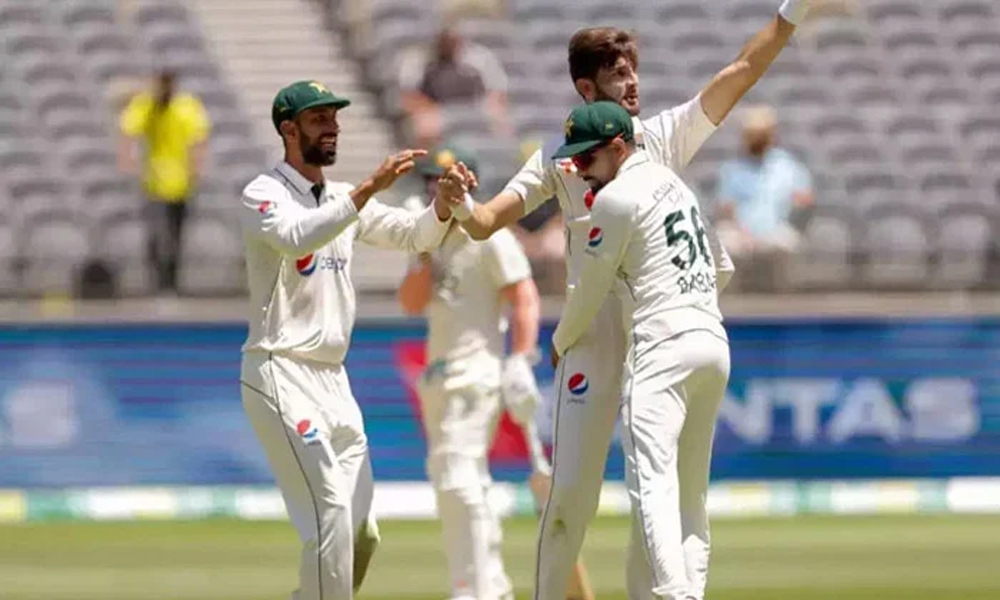

PCB advertises for Red Ball High-Performance Coach
-
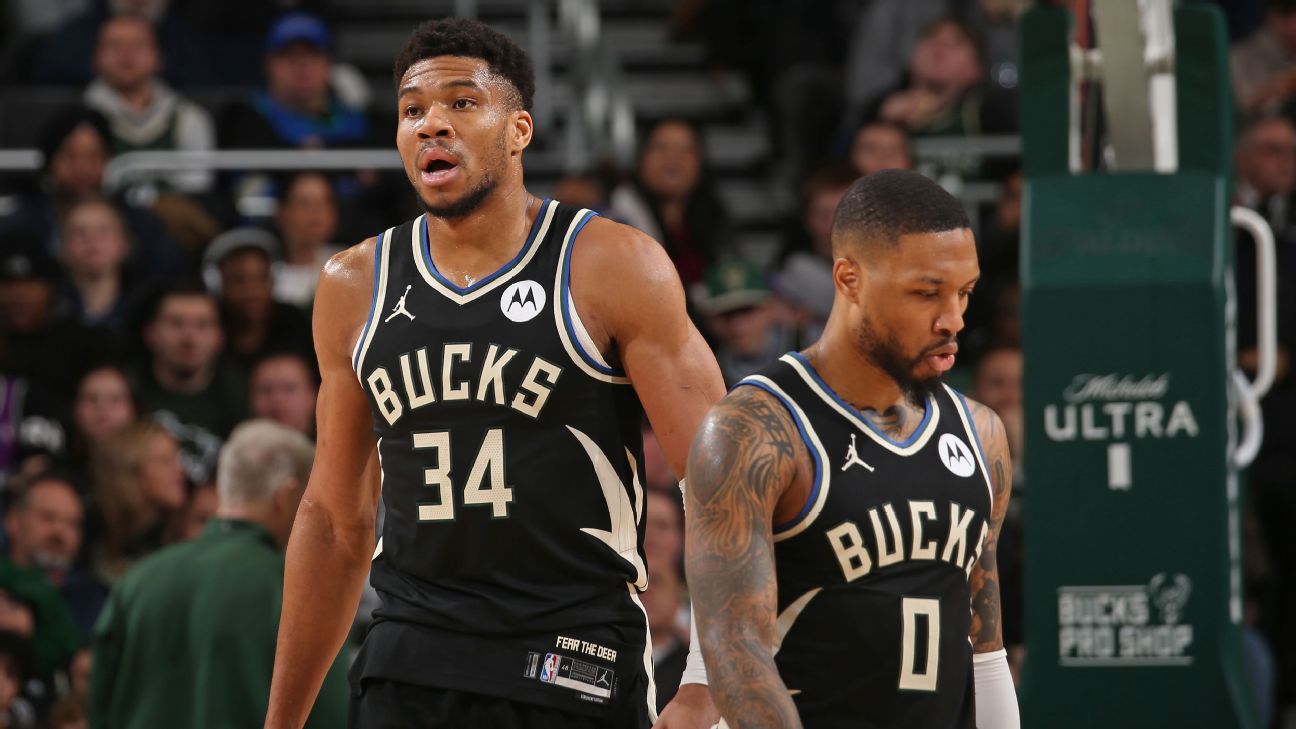

Is continuity enough to get the Bucks back into title contention?
-
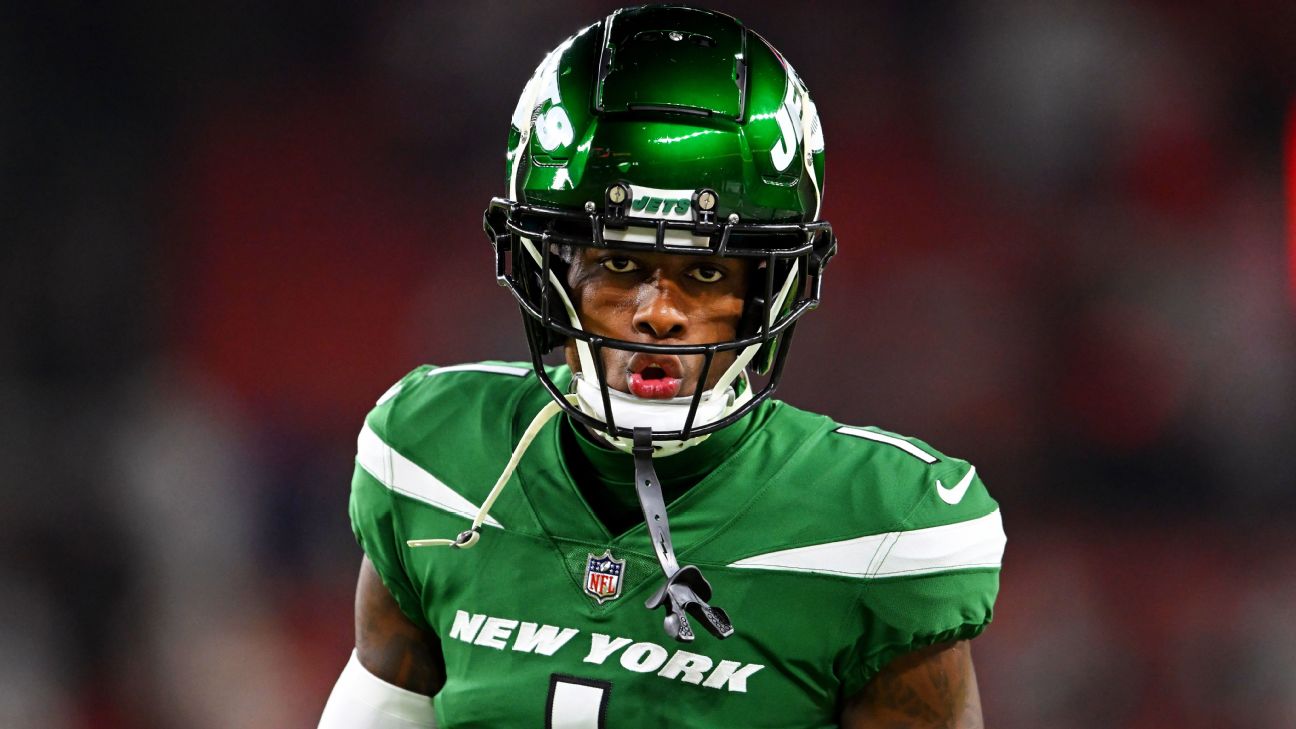

Will Sauce Gardner’s quest to be the best CB be overshadowed by lack of interceptions?
-


Suzuki Bolan discontinued in Pakistan after 36 years; Here’s replacement for ‘Carry Dabba’ – Pakistan Observer
-


Revised schedule of Pakistan vs England Test series announced
-


ICC delegation satisfied over Champions Trophy 2025 preparations
-
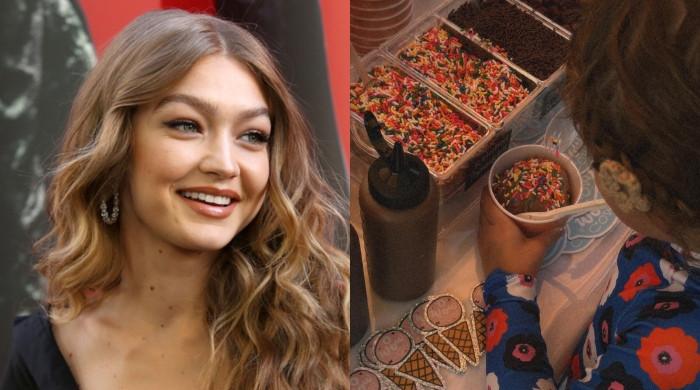

Gigi Hadid shares joyful update from her daughter’s special day
Sports
PCB advertises for Red Ball High-Performance Coach
Published
1 گھنٹہ agoon
ستمبر 21, 2024By
l955w
Lahore: Pakistan Cricket Board (PCB) issued an advertisement to search for a High-Performance Coach for the Red Ball Team.
The High-Performance Coach will assist the Head Coach in game planning while he will also work closely with the Head Coach in pre- and post-tournament preparations to enhance performance.
As per PCB, five years’ experience and minimum level two coaches are eligible to apply, aspirants can submit applications till October 7.
In the series against Bangladesh, Tim Nelson took over as high-performance coach, brought in by Red Ball coach Jason Gillespie from South Australia.
It is also reported that Tim Nelson will be Red Ball’s high-performance coach, advertised as a necessary step for a permanent appointment.
Sports
Is continuity enough to get the Bucks back into title contention?
Published
6 گھنٹے agoon
ستمبر 21, 2024By
l955w
Trent had known Rivers since he was 6 years old thanks to his father, Gary Trent Sr., whose NBA career overlapped with Rivers’. Trent Jr. had been a productive player with the Toronto Raptors for three and a half seasons but failed to reach an extension or find a multiyear deal on the free agent market. Word was out that Trent could be seeking a one-year deal for the 2024-25 season, and Rivers jumped at the opportunity.
The Bucks were seeking a replacement in their starting lineup for guard Malik Beasley and saw a youthful energy in Trent, who could fit smoothly alongside Milwaukee’s superstar duo of Giannis Antetokounmpo and Damian Lillard.
Signing Trent to a one-year deal served as the biggest offseason addition for a team that prioritized depth signings over bold moves. The Bucks also swapped out players such as Jae Crowder and Patrick Beverley, who saw their roles and production reduced during the postseason, for a new crew of veteran backups in Delon Wright and Taurean Prince.
After a year of change and turnover for the Bucks — in the past 12 months they swapped Jrue Holiday for Lillard, and hired and fired coach Adrian Griffin before turning to Rivers midway through the season — a quiet summer was welcome for a team that enters the 2024-25 season trying to balance the benefits of continuity with the urgency of its championship expectations.
“We have that stability,” Antetokounmpo said the day after the team’s first-round playoff loss to the Indiana Pacers. “We’re not questioning and trying to figure out how it’s going to look moving forward.
“Now that you know, you just got to work.”
Bucks general manager Jon Horst was limited in his flexibility to change his roster this offseason. Milwaukee’s draft picks were depleted by the trade for Holiday in 2020 and for Lillard last year. Because of the restrictions of the new collective bargaining agreement, the Bucks did not have salary cap space and weren’t allowed to aggregate contracts, acquire a player via sign-and-trade or use the tax midlevel exception.
It left them with little options aside from adding players via the veterans minimum.
Besides, it had still been less than a year since Milwaukee swooped in for Lillard before training camp, sending a package to the Portland Trail Blazers that included Holiday — the starting point guard on the Bucks’ 2021 championship team — who was then sent to the eventual champion Boston Celtics. It was a bold move that paired an All-NBA guard in Lillard with a two-time MVP in Antetokounmpo, with each being the most accomplished teammate either player had ever played with.
Lillard’s arrival also paid off in another way, as Antetokounmpo committed to the Bucks by signing a three-year, $186 million max extension that begins this season.
Antetokounmpo inked his deal one day before the start of the season, but the Bucks’ positive momentum didn’t carry into the games.
Lillard was slow to adjust to a new environment and struggled to find on-court chemistry with Antetokounmpo. Griffin was fired 43 games into the season (with a 30-13 record) before the team turned to Rivers, who went 17-19. With Antetokounmpo missing the entire six-game series against the Pacers because of a strained left calf and Lillard limited by an Achilles injury, the Bucks crashed out in the first round of the playoffs for a second straight season.
When Rivers took over the team in February, he acknowledged how difficult it would be to turn a team around midseason. Now with a full offseason and training camp, he will have an opportunity to establish a style of play, including by adding role players who better fit his vision.
“Think about it: Giannis worked out all [last] summer not knowing he was going to have Dame,” Rivers said the day after last season’s playoff exit. “Dame worked out a little bit, not knowing he was going to have Giannis. Khris [Middleton], the same way. Now all three of them get to work out this summer knowing some of the things we’re going to do.
“The most important stuff is the sets and the stuff that you’re going to run, giving it to them long before camp starts. Because it’s easy for a star player to understand what he can do, it’s better when he understands how he can make everybody else better through those sets.”
The Bucks are betting on a full offseason and training camp to help build chemistry for Lillard and Antetokounmpo. Still, they were encouraged by the numbers with those two players on the floor last season: The team was plus-10.2 points per 100 possessions last season when their two stars shared the floor.
“I’m willing to put in work this summer. I think I have guys around me that they’re willing to do so,” Antetokounmpo said at the end of last season. “I saw how Dame was after the [playoffs]. I saw how Khris [Middleton] was after the game. … I know they’re going to put in the work.”
The question for Milwaukee is how the Bucks will compare to the rest of a stacked Eastern Conference.
Boston is coming off a historic season in which it won its league-leading 18th NBA championship. The Philadelphia 76ers just reloaded by adding superstar Paul George to play alongside Joel Embiid and emerging star Tyrese Maxey. The New York Knicks strengthened their core by adding Mikal Bridges. Emerging young teams, the Cleveland Cavaliers, Orlando Magic and Pacers, are on the rise, having finished with playoff spots last season.
Meanwhile, the Bucks return one of the oldest rosters in the NBA with four of their projected starters over 30. Antetokounmpo, who has been injured during the last two postseasons, turns 30 this season. Lillard will be 35 in October. Middleton is 34 and coming off offseason surgery on both ankles. Center Brook Lopez is 36.
“I always like a team that wins to have a little bit of experience, which comes from being a little bit older, knowing how to play the game and have that corporate knowledge of the game,” Antetokounmpo said at the end of last season. “And a little bit of energy.”
The age of its roster and the pressure to maximize each season of Antetokounmpo’s prime — “With Giannis, you’re always on the clock,” Horst told ESPN at the start of last season — guided Milwaukee’s bold moves over the past year in pursuit of another title.
Now the Bucks are counting on an offseason defined by continuity, a few additions to their depth and some better health during the postseason to give them a chance at another championship.
“We’re getting older. We’re not getting any younger, but that doesn’t mean we cannot still perform at a high level,” Antetokounmpo said. “It’s hard to say, ‘Yeah, we’re old and you have to make changes.’ Because these guys, they’re beasts.”
Sports
Will Sauce Gardner’s quest to be the best CB be overshadowed by lack of interceptions?
Published
7 گھنٹے agoon
ستمبر 21, 2024By
l955w
FLORHAM PARK, N.J. — Sauce Gardner doesn’t do vacations. The New York Jets cornerback doesn’t believe in them. The idea of chilling at a five-star resort, sipping fruity libations on a white-sand beach, doesn’t appeal to him. First of all, he doesn’t drink alcohol. No sauce for Sauce. Secondly, he’s a homebody. The Jets’ trip to London in two weeks to face the Minnesota Vikings will be his first time out of the country. He said he hasn’t taken a true vacation since entering the NFL in 2022, offering an existential reason. “Me, personally, I just feel like you’re just trying to escape the lifestyle that you live,” Gardner said in a quiet moment at his locker. “We play football, and we should be training. So going on that long vacation is getting away from what you’re supposed to be.” Which explains why he reported to the Jets’ facility two weeks after last season ended to begin training, three months ahead of the official start to the offseason program. It’s why his new, sprawling home in New Jersey includes a recovery room, complete with a red-light therapy bed, sauna, cold tub, treadmill and stationary bike. From the time he was 4 years old, playing flag football in the Tiny Mites league in the Seven Mile section of Detroit, Gardner’s singular focus has been to play in the NFL and be the best cornerback there ever was. A lot of kids dream that dream, but his early-career trajectory aligns with his life plan, and he’s just 24. Gardner is the only cornerback since the NFL-AFL merger in 1970 to be named first-team All-Pro in each of his first two seasons. Only three defensive players have pulled that off: former New York Giants legend Lawrence Taylor, Dallas Cowboys pass rusher Micah Parsons and Gardner, who said his individual goal this season is to be Defensive Player of the Year. Now if he could just get his hands on a pass or two, maybe that would silence critics who suggest the sauce isn’t as advertised. He will take a 26-game interception slump into Thursday night against the New England Patriots at MetLife Stadium (8:15 p.m. ET, Prime Video). Big deal or nah? LONG BEFORE HE shadowed wide receivers, Gardner shadowed his big brother, Allante. Despite a six-year age difference, the two were inseparable growing up. Even though there was an open room in their house, they decided to share the same bedroom. Allante played football, so Sauce played football, following him into backyard games against the big kids. When Allante changed his uniform to No. 2, Sauce switched to No. 2. When Allante worked out with a trainer during his college offseasons — he was a running back/wide receiver at Saginaw Valley State and Lakeland University — Sauce tagged along. “He was always right next to me,” said Allante, who knew there was something special about Sauce when he learned at the age of 5 to ride a bike with no training or training wheels. Gardner was always fearless, according to Allante, who said his kid brother once broke his arm doing a backflip off a fence. He said they both acquired their work ethic from their mother, Alisa, a single mom who worked two jobs to support them. If one of them wanted to attend a football camp, she worked overtime to pay the fees. Gardner said one memory of living at the corner of Rowe Street and Seven Mile East made an impact. When he was 14, he saw a man fatally shot outside a liquor store. Out of fear, he didn’t tell anyone. “It just made me come to the realization that you can’t take anything for granted,” Gardner said. “Me just witnessing that, I was like, ‘Dang.’ I just had to make sure I was locked in on everything — football, school, all that — because I knew ultimately where I wanted to go.” Whatever direction Gardner goes, Allante is there with him — even if it’s not physically. Allante, who still lives in Detroit, is a vice president at Vayner Sports — the company that represents his brother. Sounding like an agent, but speaking as a blood relative, Allante believes Gardner has the potential to be “a once-in-a-lifetime player.” Cornerbacks are often evaluated based on their interception total. That calculus can’t be applied to Gardner, who has as many Pro Bowls on his résumé as career picks (two). In an ESPN survey of nearly 80 NFL coaches, scouts and executives, one unnamed personnel evaluator called Gardner “one of the most overrated players in the league.” The same survey ranked him the third-best corner, behind the Denver Broncos’ Pat Surtain II and the Cleveland Browns’ Denzel Ward. Former star Richard Sherman, a three-time All-Pro cornerback, believes Gardner has benefitted from geography. “Obviously, being in the New York market helps,” Sherman, a Prime Video analyst, said on a conference call with reporters. “It helped [Darrelle] Revis, it helps Sauce. … He’s incredibly worthy [of his accolades]. He has been named first-team All-Pro. It’s not because he hasn’t played well, but it definitely helps playing in that New York market and getting that focus on you and then playing well while you’ve got that focus.” For his money, Sherman said Surtain is the best all-around corner in the sport, adding, “If he was in a big market, if he was playing for the Dallas Cowboys, I don’t think there would be any debate because people would be watching him all the time.” WHEN TOLD OF Sherman’s comments, Gardner shrugged. He agreed to a certain extent, saying he does profit from playing in New York. But he said that it’s a double-edged sword: More eyes on you means more pressure. Even Sherman acknowledged, “New York can chew you up and spit you out the same way it can raise your game.” Gardner added, “A lot of times, there’s no in-between.” Gardner welcomes the scrutiny. Asked if he’s the best corner, he said simply, “I try to do it as if I’m the best.” Former cornerback Jason McCourty, who played 13 years, had initial questions about Gardner despite his lofty draft pedigree — fourth overall in 2022. Those questions didn’t last long. “Even coming in, I’m wondering how he’s going to do it, covering these guys man-to-man, coming from [the University of] Cincinnati — and he’s just been awesome,” said McCourty, now an ESPN analyst, in a phone interview. “To step into the NFL and to be able to cover some of the best wide receivers, to be an All-Pro and to hit the ground running is just completely elite.” But what about the lack of interceptions? McCourty said it shouldn’t be a barometer, that Gardner’s ability to neutralize wide receivers trumps his low interception total. Sherman believes the game has changed. Gone are the days, he said, when corners such as Deion Sanders and Champ Bailey made the Pro Football Hall of Fame with gaudy interception totals — 53 and 52, respectively. In 2023, Revis, the former Jets star, was elected on the first ballot with 29. “I do think interceptions are important, but I guess, in this day and age, [people] don’t because there’s just not a lot of guys getting them,” said Sherman, who made 37 in his career. While the interception total may not be eye-popping, Gardner is a pass-breakup machine. His career total of 33 is the third most among corners since he entered the league. If he’s getting close enough to defend passes, in theory, he should be catching some of them. He knows this; he doesn’t shy away from it. Asked his goals for 2024, he said, “Get more picks and keep grinding for that Defensive Player of the Year [award].” He wants at least four or five interceptions. Gardner spends time after practice on every-day drills, including catching balls from a Jugs machine. His coaches love his work ethic. As cornerbacks coach Tony Oden likes to say, “Just when you think you’ve arrived as a player … bad things start to happen.” Whenever coach Robert Saleh is asked about ways in which Gardner can improve, he usually responds: Intercept the ball more often. Oden, always pushing his protégé, said “there’s more meat on the bone.” Perhaps, but his career is off to a historic start. He has pitched a league-high six shutouts since 2022 — games in which he allowed zero receptions as the nearest defender with a minimum of 20 coverage snaps, according to NFL Next Gen Stats. Gardner received the All-Pro nod with a zero-interception performance last season. For a corner, that hadn’t occurred since 2010, when Revis and Nnamdi Asomugha both did it. Uncommonly tall for a corner at 6-foot-3, with 33½-inch arms, Gardner makes it difficult for receivers to escape his clutches. His size and physicality allow him to jam bigger receivers at the line of scrimmage, according to McCourty. What really impresses McCourty is how Gardner can stick to smaller, quicker receivers at the top of their routes. These skills, he believes, could make him one of the best corners of this era. “When you have a longer guy, a taller guy that can run, it’s kind of tough for a receiver,” Tennessee Titans receiver Tyler Boyd said. “It’s tough to just run away from the guy, knowing how long and athletic he is. But don’t get me wrong, he’s beatable. Every DB in this league is beatable.” The Titans proved that Sunday, beating Gardner on a 40-yard touchdown pass to Calvin Ridley. The coverage was tight, but quarterback Will Levis dropped the pass between Gardner and safety Chuck Clark. All told, Gardner allowed five catches for 97 yards when targeted, his most yards allowed as the nearest defender in his career, according to NFL Next Gen Stats. It was an uncharacteristic day for Gardner, who rarely surrenders chunk plays. Afterward, in the locker room, he was shaking his head. “I still don’t know how he caught that,” he said. IN THE SEASON-OPENING loss to the San Francisco 49ers, Gardner recognized a gadget play was coming. On a third-and-5 from the Jets’ 29, he alerted teammates to watch for a reverse. Linebacker C.J. Mosley heard him before the snap, adjusted and helped trap wide receiver Deebo Samuel in the backfield. Mosley credited Gardner, calling him one of the smartest players on defense. “He’s become a real student of the game,” Mosley said. “He’s a lot more vocal than he was as a rookie.” Gardner made the tackle and was credited with his first career sack because of Samuel’s intention to throw a pass. “He’s a film junkie,” Allante said. Allante said Gardner watches about an hour of game film every night in his home theater, learning opponents’ tendencies and critiquing his own performance. He described it as a singular focus, saying his brother possessed it at an early age. “He’s a different guy,” Allante said. “He don’t drink, he don’t smoke, he don’t party.” Outside of football, Gardner plays video games — he’s an accomplished gamer — and hones his golf swing in his home simulator. Golf is a new passion. He proudly declares that he broke 90 for the first time before training camp. Life is good for Gardner. Business is booming. The price for Gardner will increase in the coming years, perhaps next year, when he’s eligible for a contract extension. The ceiling on the cornerback market was raised recently, when Jalen Ramsey ($24.1 million per year) and Surtain ($24 million) signed extensions. With another good year, Gardner could leapfrog both to become the highest-paid corner. Gardner received a phone alert when Ramsey’s deal was completed, saying his first thought was: “Dang, Pat wasn’t even the highest-paid corner for a day.” He applauded the contracts, noting that corners finally are closing the gap with the highest-paid receivers, but said he’s not looking ahead to his potential blockbuster deal. Gardner’s job as a corner is to make those receivers seem invisible. He’s also had a knack for making quarterbacks shy away from him. In two games, he has been targeted only eight times as the nearest defender, having allowed five receptions for 97 yards. In the offseason, he asked the coaches to give him the added responsibility of covering the opponents’ No. 1 receiver. Philosophically, the Jets’ staff is opposed to doing that on an every-down basis, citing scheme and personnel considerations, but they’re giving him a taste of it. In the opener, Gardner traveled with Brandon Aiyuk for a handful of plays and allowed no catches. In Week 2, despite the long touchdown to Ridley, Gardner was given a huge responsibility with the game on the line. In the final minute, with the Titans in the red zone, down by a touchdown, Gardner shadowed DeAndre Hopkins on four straight pass plays. Levis avoided that matchup. The result: Three incomplete passes, a sack and a 24-17 victory for the Jets (1-1). “We have a special talent in No. 1,” defensive coordinator Jeff Ulbrich said, “and Sauce can do some things that are so unique and special.” Gardner welcomes the challenge. He doesn’t mind playing on an island, the same way Revis did back in the day. Given his dislike for vacations, it might be the only island he enjoys.
Sports
Revised schedule of Pakistan vs England Test series announced
Published
18 گھنٹے agoon
ستمبر 20, 2024By
l955w
KARACHI: Pakistan’s cricket board on Friday announced a revised schedule for a series it will hold against England next month, ending weeks of uncertainty including reports it could be moved abroad.
The first two Tests will be held back-to-back in Multan and the last in Rawalpindi, skipping Karachi where ongoing construction at the National Stadium has forced the Pakistan Cricket Board (PCB) to tweak the schedule.
“The series will start in Multan with the first Test from October 7-11 and the second Test — originally scheduled for Karachi — has been shifted to Multan, as the stadium in Karachi is undergoing (a) major facelift for next year’s Champions Trophy,” said a statement from the PCB.
The second Test will start from October 15, while the third in Rawalpindi will be staged from October 24.
The England men’s cricket team will arrive in Multan on October 2 for their second tour of Pakistan in two years.
The announcement ended weeks of frustrating wait by the England and Wales Cricket Board who were seeking clarity on the schedule.
Moreover, there were media reports of shifting the series to the United Arab Emirates (UAE) where Pakistan was forced to play its home matches from 2010 to 2019.
Revised schedule:
7-11 Oct – First Test, Multan
15-19 Oct – Second Test, Multan 2
4-28 Oct – Third Test, Rawalpindi

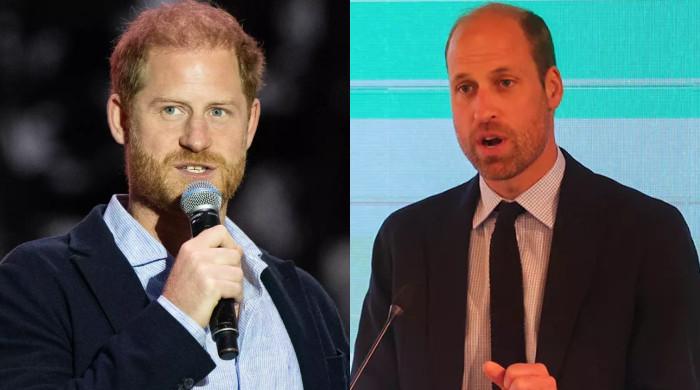
Prince Harry reclaims spotlight from Prince William with power move

PCB advertises for Red Ball High-Performance Coach
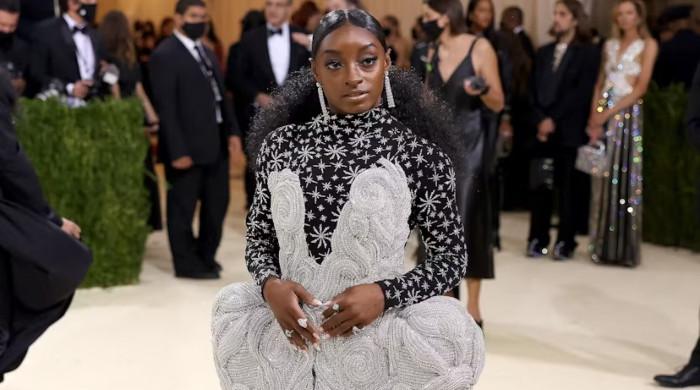
Simone Biles soars with G.O.A.T. performers on Gold Over America tour

Samsung’s new midrange Galaxy A55 has improved security, features | The Express Tribune

New Zealand in efforts to fast track consenting of major projects – Pakistan Observer
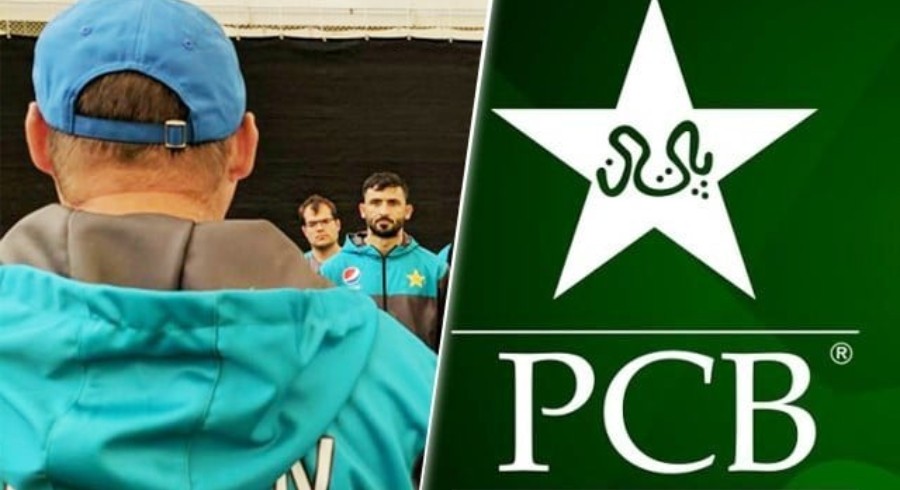
PCB opens applications for specialized red and white-ball coaches
Trending
-

 Technology6 مہینے ago
Technology6 مہینے agoSamsung’s new midrange Galaxy A55 has improved security, features | The Express Tribune
-

 Pakistan7 مہینے ago
Pakistan7 مہینے agoNew Zealand in efforts to fast track consenting of major projects – Pakistan Observer
-

 Sports6 مہینے ago
Sports6 مہینے agoPCB opens applications for specialized red and white-ball coaches
-

 Pakistan6 مہینے ago
Pakistan6 مہینے agoLegal issues hinder projects’ transfer | The Express Tribune
-
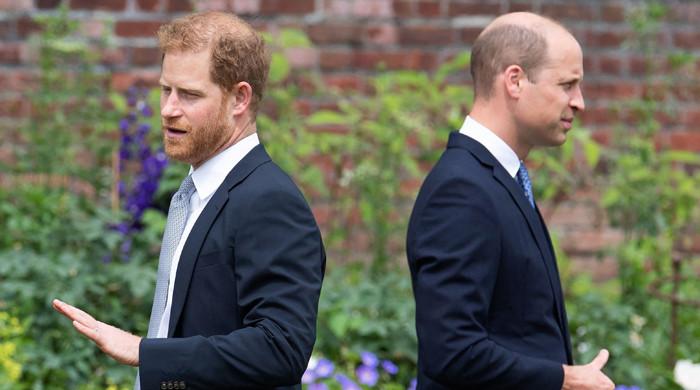
 Entertainment6 مہینے ago
Entertainment6 مہینے agoPrince William foils Prince Harry’s reunion plans ahead of UK return
-
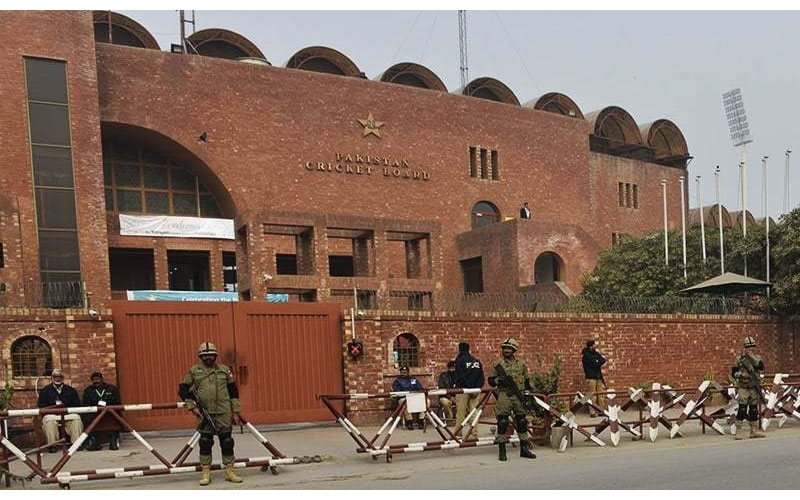
 Sports5 مہینے ago
Sports5 مہینے agoConversation continues between PCB, New Zealand for white ball series
-

 Pakistan7 مہینے ago
Pakistan7 مہینے agoNADRA NICOP fee March 2024 – Pakistan Observer
-
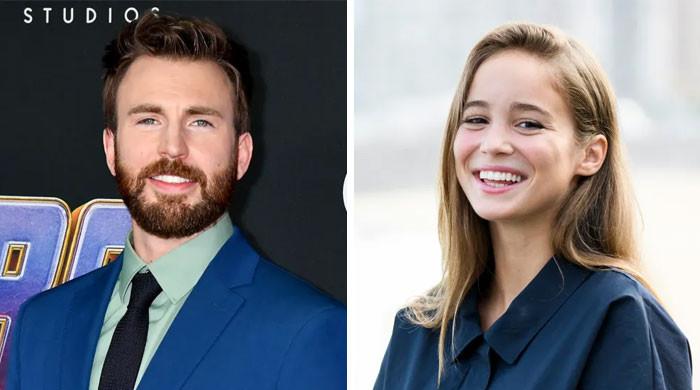
 Entertainment6 مہینے ago
Entertainment6 مہینے agoChris Evans, Alba Baptista make stunning red carpet debut at VF Oscar party
